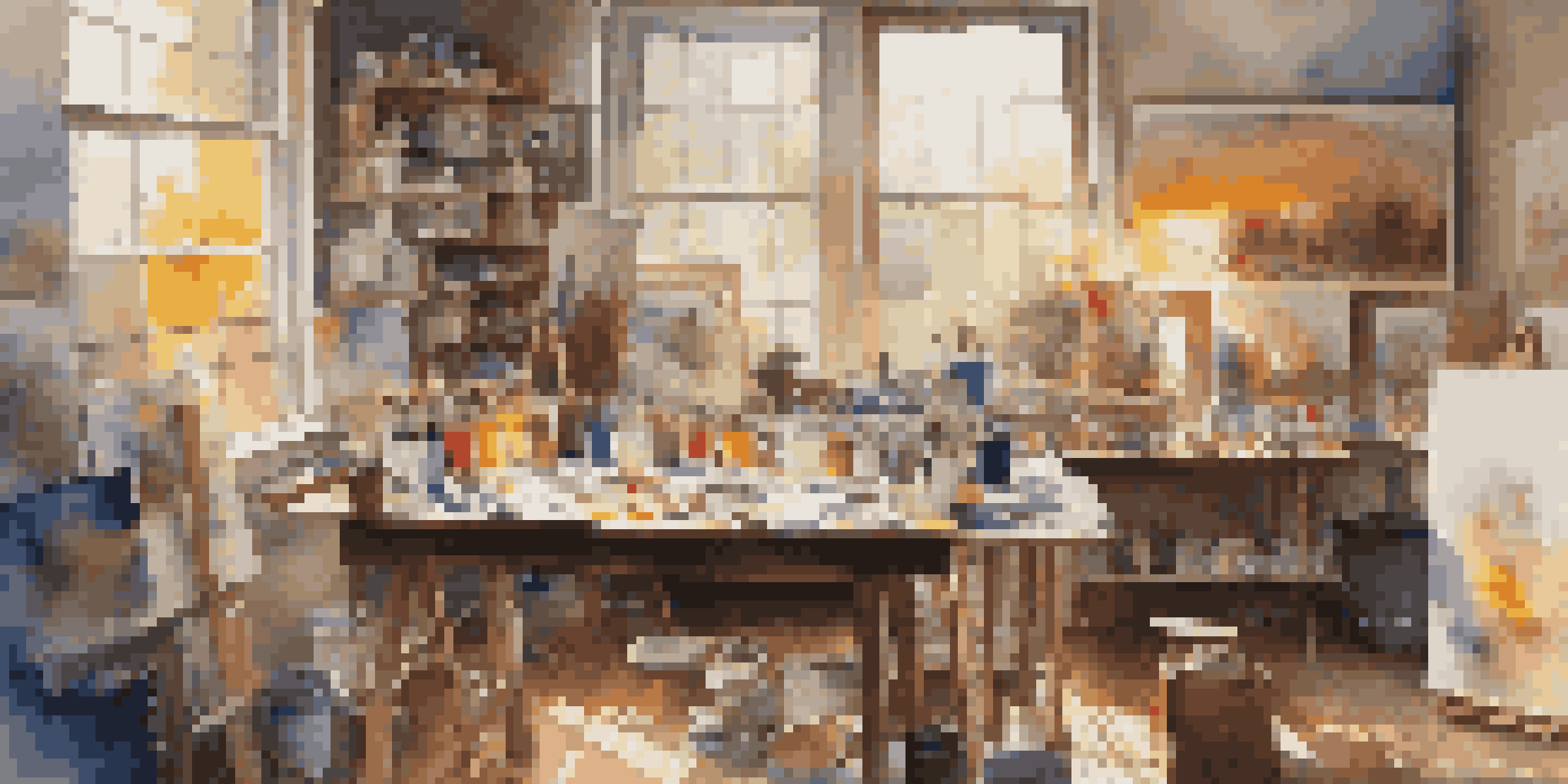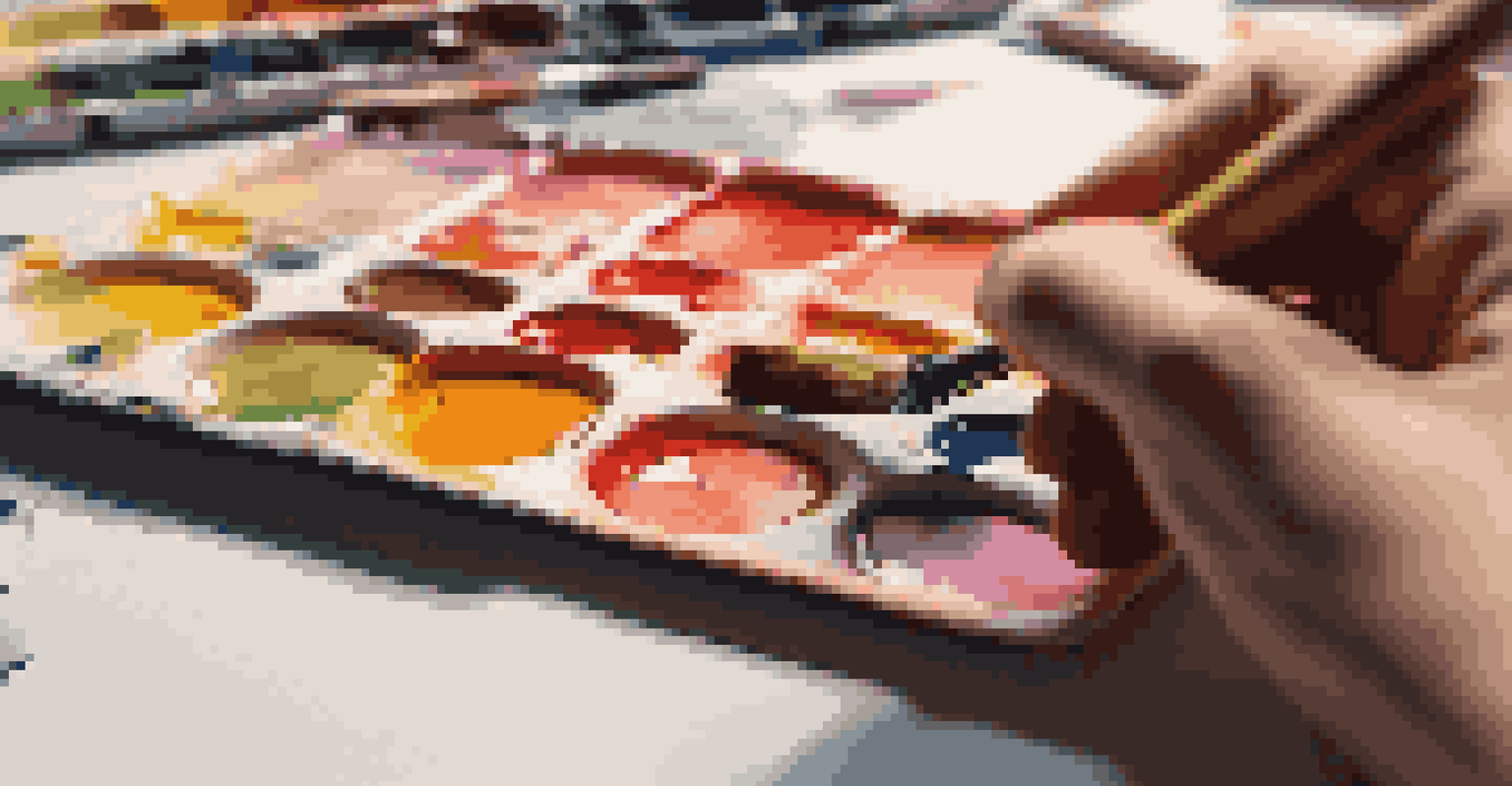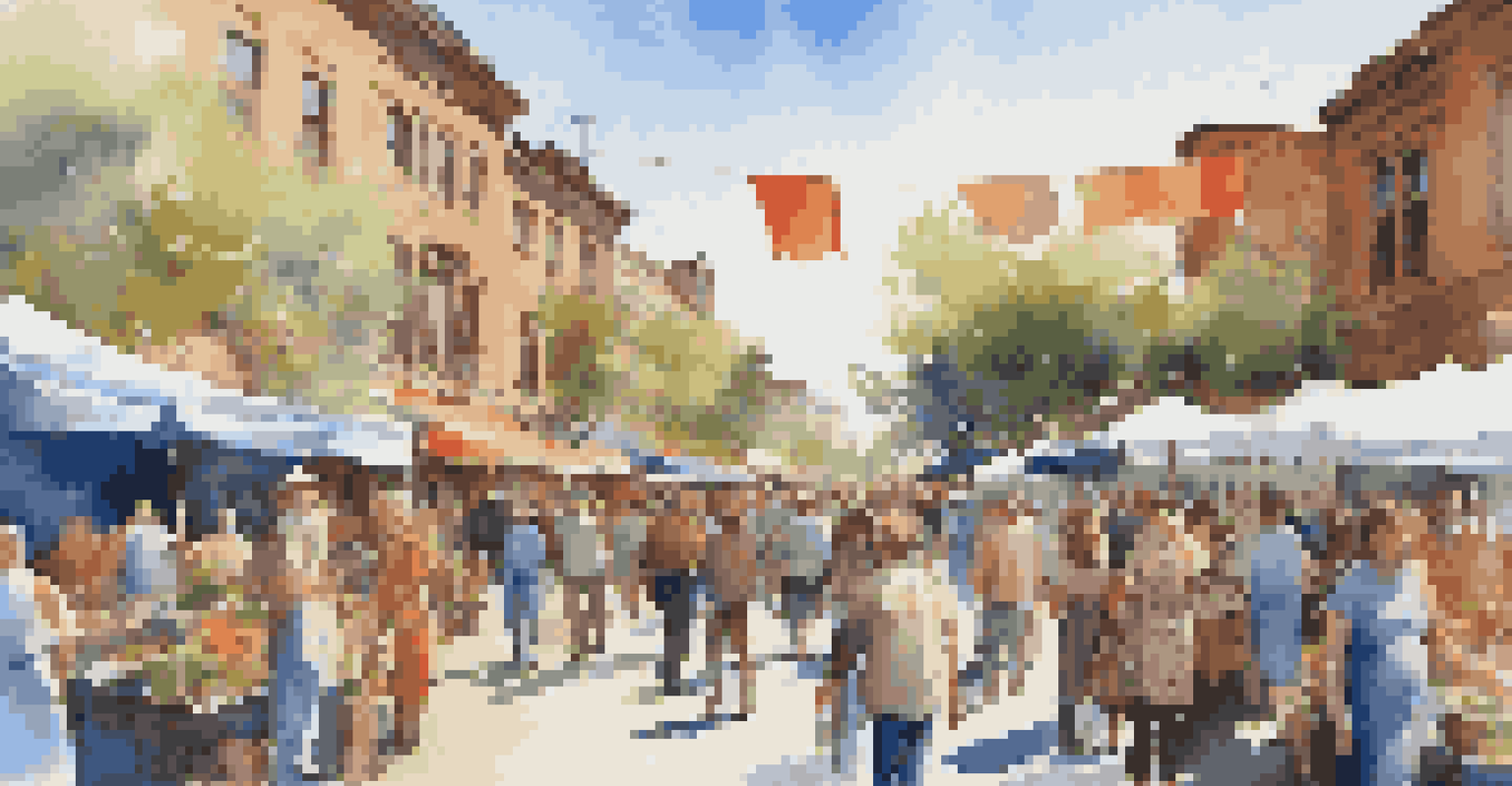The Impact of Social Media on Art Sales and Marketing

The Rise of Social Media in the Art World
In recent years, social media has transformed how art is shared and sold. Platforms like Instagram and Pinterest allow artists to showcase their work to a global audience instantly. This shift has made it easier for emerging artists to gain visibility without relying solely on traditional galleries.
Social media is not just a tool; it's a new way of thinking about the art world.
Social media acts as a virtual gallery, enabling artists to build a following and connect with potential buyers directly. With just a few clicks, they can share their creative processes, engage with art enthusiasts, and even sell their pieces through posts or stories. This accessibility has democratized the art world, breaking down barriers that once existed.
Additionally, the visual nature of these platforms aligns perfectly with art promotion. For instance, Instagram's emphasis on high-quality images allows artists to present their work in the best light, making it an ideal medium for art marketing.
Building Community and Engagement with Audiences
Social media fosters a sense of community among artists and art lovers. Through likes, shares, and comments, artists can engage with their audience, creating a more personal relationship that traditional sales methods often lack. This interaction not only builds loyalty but also provides valuable feedback on their work.

Moreover, many artists use social media to host live events, such as virtual studio tours or Q&A sessions, further enhancing engagement. For example, an artist may go live on Instagram to discuss their latest collection, allowing followers to ask questions and gain insights into their creative process.
Social Media Transforms Art Sales
Platforms like Instagram enable artists to showcase their work globally, making it easier for them to connect with buyers directly.
This direct communication helps demystify the art-making process and makes it more relatable. As a result, fans feel more connected to the artist, which can translate into increased sales and word-of-mouth promotion.
Influencer Collaborations and Art Marketing
Collaborating with social media influencers has become a popular strategy for artists to reach new audiences. Influencers often have large, dedicated followings that can introduce artists to potential buyers who may not have discovered them otherwise. This partnership can be mutually beneficial, as influencers gain unique content to share.
The beauty of social media is that it allows everyone to be an artist, and everyone to see art.
For instance, an artist might send a piece to an influencer, who then showcases it in a post or video, effectively marketing the artwork to their followers. This method not only boosts visibility but also lends credibility to the artist through association with trusted figures.
As influencers share their genuine appreciation for the art, it creates an authentic connection that resonates with their audience, making them more likely to consider purchasing the artwork.
The Role of User-Generated Content in Art Sales
User-generated content (UGC) is another powerful tool in the realm of art marketing. When fans and buyers post about their purchased artwork, it serves as organic promotion that can sway potential customers. For example, a buyer sharing a photo of their new painting in their living room adds a layer of authenticity that traditional advertising can't replicate.
This type of content not only showcases the art in real-life settings but also encourages others to envision how the artwork would fit into their own lives. When prospective buyers see art in everyday scenarios, it can significantly influence their purchasing decisions.
Community Engagement Enhances Loyalty
Interacting with audiences through likes, comments, and live events helps artists build loyalty and gain valuable feedback.
Encouraging customers to share their experiences can create a ripple effect, leading to increased visibility and sales for the artist. Many artists incentivize this by hosting contests or featuring customer posts on their own profiles.
Social Media Advertising: Targeted Approaches
Social media advertising offers artists a way to target specific demographics, making it an effective marketing strategy. Platforms like Facebook and Instagram provide tools for artists to create ads that reach potential buyers based on interests, behaviors, and location. This level of targeting can lead to higher conversion rates.
For instance, an artist specializing in abstract paintings can tailor ads to reach individuals who have shown interest in contemporary art. By honing in on the right audience, artists can maximize their advertising budget and see a better return on investment.
Additionally, social media ads can be visually stunning, allowing artists to showcase their work in a captivating way. This combination of visual appeal and targeted reach makes social media advertising an essential component of modern art marketing.
The Importance of Consistent Branding in Social Media
Consistency in branding is crucial for artists looking to establish a strong social media presence. This includes maintaining a cohesive aesthetic across posts, using a consistent tone in captions, and clearly communicating their artistic vision. A well-defined brand helps artists stand out in a crowded digital landscape.
For example, an artist might use a specific color palette or style in their posts, making their work easily recognizable. This consistency not only helps attract followers but also builds trust with potential buyers, as they know what to expect.
Influencers Boost Art Visibility
Collaborating with social media influencers allows artists to reach new audiences and enhances the credibility of their work.
Moreover, a strong brand identity can create a lasting impression, encouraging followers to share the artist’s work with others. This organic sharing can lead to increased visibility and, ultimately, more art sales.
Measuring Success: Analytics and Feedback
To understand the impact of social media on art sales, artists must track their performance through analytics. Most platforms provide insights into engagement metrics, such as likes, shares, and comments, allowing artists to gauge which content resonates best with their audience. This data is invaluable for refining marketing strategies.
For instance, if an artist notices that posts showcasing their creative process receive more engagement than finished pieces, they might decide to focus on sharing more behind-the-scenes content. This ability to adapt based on feedback helps artists stay relevant and connected to their audience.

Furthermore, regular analysis of social media performance can highlight trends and inform future campaigns. By being proactive and responsive, artists can enhance their marketing efforts and boost sales.